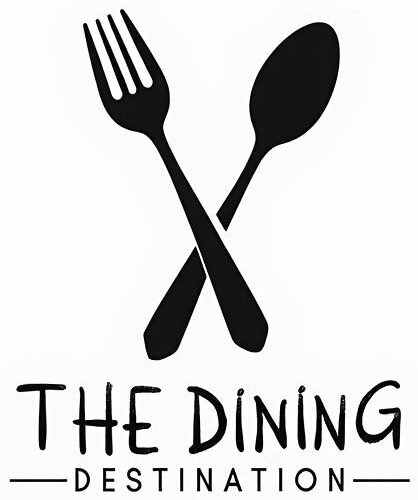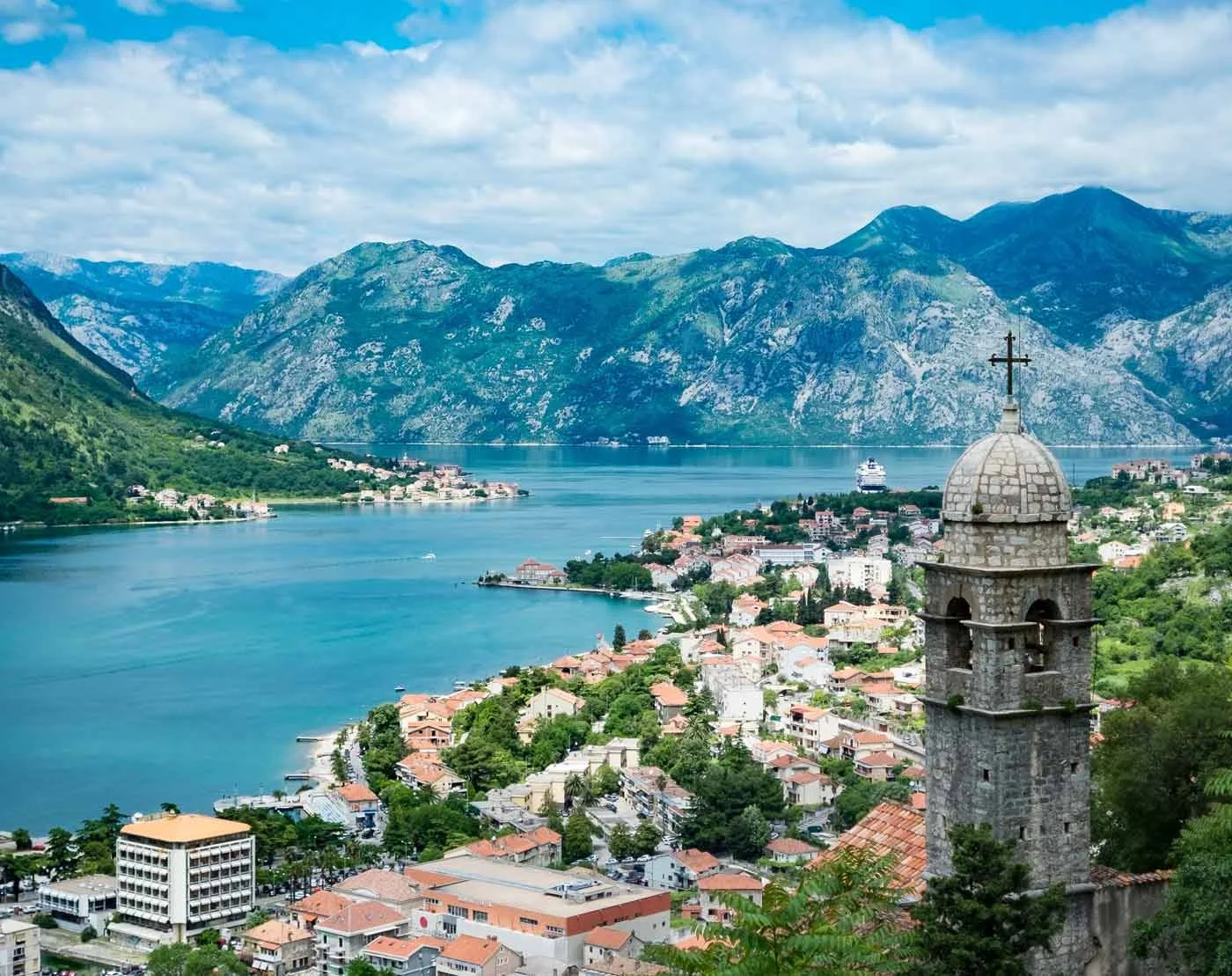Find the World’s Culinary Capitals
Best food travel destinations have become the ultimate motivation for travelers seeking authentic cultural experiences through local cuisine. Based on extensive surveys and expert recommendations, here are the top food cities that should be on every culinary explorer’s bucket list:
- New Orleans, USA – 93% of locals rate the restaurant scene highly, known for gumbo, jambalaya and beignets
- Bangkok, Thailand – 86% of locals rated food scene as ‘good’ or ‘amazing,’ famous for street food
- Medellín, Colombia – Most budget-friendly food city with 89% of locals confirming affordability
- Cape Town, South Africa – Tied with Paris at 95% local approval rating for dining
- Mexico City, Mexico – 80% of locals praise the restaurant scene, second-favorite among food experts
Have you ever eaten something so delicious while traveling that it becomes the defining memory of your trip? For most passionate food travelers, the answer is a resounding “yes.” The taste of pintxos in San Sebastián, the aroma of curry laksa in Kuala Lumpur, or the perfect margherita pizza in Naples can transform a simple vacation into a life-changing sensory experience.
Food travel has evolved beyond simply eating while away from home. Today, it’s about immersing yourself in local culinary traditions, connecting with food artisans, and understanding the cultural significance behind every bite. As Grace Beard, Travel Editor at Time Out notes, “Food is the backbone of local culture in our cities and the reason many of us choose to travel.”
What makes these destinations stand out isn’t just the quality of their restaurants but the entire food ecosystem – from humble street carts to Michelin-starred establishments, from centuries-old recipes to innovative fusion creations. These cities offer authentic flavors that tell stories of their history, geography, and people.
Whether you’re planning your next vacation around breakfast, lunch, and dinner (with plenty of snacks in between), or seeking to understand a culture through its culinary traditions, these food destinations promise unforgettable gastronomic trips that will feed both your stomach and your soul.

Find the Best Food Travel Destinations

Have you ever planned an entire trip around what you’re going to eat? You’re not alone! At The Dining Destination, we’ve chatted with countless travelers, pored over thousands of reviews, and even sampled many dishes ourselves (tough job, I know) to bring you this heartfelt guide to the world’s most exceptional best food travel destinations.
What transforms an ordinary city into a culinary paradise isn’t just fancy restaurants or celebrity chefs. It’s something more profound – it’s how food weaves itself into the very soul of a place.
When I visited Bangkok for the first time, I remember being completely overwhelmed by the symphony of aromas hitting me from every direction. That moment taught me that authenticity matters deeply in food travel. The cities on our list preserve traditional recipes like treasured heirlooms, passing techniques from generation to generation.
Yet these same places accept innovation too. In Mexico City, you’ll find chefs who honor ancient Aztec ingredients while presenting them in thoroughly modern ways. This beautiful tension between old and new creates the most exciting food scenes on earth.
One thing I’ve personally loved about places like Medellín is the accessibility – you don’t need a trust fund to eat extraordinarily well. Some of my most memorable meals have cost less than $5 from humble street carts operated by vendors who’ve perfected a single dish over decades.
Diversity of influences creates magic too. New Orleans’ unique blend of French, Spanish, African, and Caribbean flavors simply couldn’t exist anywhere else on earth. These cultural crossroads create distinctive food identities that tell rich stories.
Speaking of stories, the cultural context of food is what transforms eating from mere sustenance into profound experience. As one passionate food traveler told us: “I had some of the best meals of my life in Portland, Maine, and it wasn’t even all seafood.” This perfectly captures how the unexpected destinations often create the most lasting impressions.
While Paris and Tokyo certainly deserve their sterling reputations, we’re noticing more travelers seeking out under-the-radar food havens. Places where authentic local cuisine hasn’t been polished and packaged for mass tourism often deliver the most genuine connections.
Ready to find which cities have earned their place on the ultimate foodie bucket list? Let’s explore the destinations that will forever change how you think about food and travel.
New Orleans, USA – A Melting Pot of Flavors
When Time Out crowned New Orleans as the top global food city in their 2025 ranking, foodies around the world nodded in agreement. With an astounding 93% of locals raving about their restaurant scene, the Big Easy has earned its spot as one of the best food travel destinations in the world. Walk through the historic French Quarter or venture into the city’s charming neighborhoods, and you’ll understand why—the intoxicating aromas of Creole and Cajun cooking seem to dance in the air, beckoning you to take another bite.

What makes New Orleans truly magical isn’t just the food itself—it’s the rich mix of cultural influences that created it. French, Spanish, African, and Caribbean flavors have mingled and evolved over centuries, creating something utterly unique. From neat old-world establishments to humble corner po’boy shops, the city serves up history on every plate.
“In New Orleans, food isn’t just sustenance – it’s a celebration, a tradition, and a way of life. Every dish tells a story of cultural exchange and resilience,” explains a local chef with flour-dusted hands and passion in his voice.
Food isn’t just a necessity here—it’s woven into the city’s soul, much like its legendary music. Throughout the year, the calendar brims with culinary celebrations that bring locals and visitors together. Whether you’re sipping wine at the New Orleans Wine & Food Experience or debating the merits of different po’boy fillings at the Oak Street Po-Boy Festival, you’ll find yourself surrounded by people who speak the universal language of good food.
Must-Try Dishes in New Orleans
When you visit the Crescent City, your taste buds are in for a treat that’s both profound and playful. The local cuisine isn’t pretentious—it’s honest, soulful cooking that warms you from the inside out.
Gumbo sits proudly at the heart of New Orleans cuisine. This rich, complex stew thickened with okra or filé powder feels like a warm hug in a bowl. Every family guards their recipe like treasure, arguing over whether seafood, sausage, or chicken makes the perfect gumbo. The secret? A perfectly crafted roux that forms the base—cooked slowly until it reaches just the right shade of chocolate brown.

Jambalaya showcases the Spanish influence on the city’s cuisine. This one-pot wonder combines rice, meat, seafood, and vegetables in a harmonious blend that changes slightly from kitchen to kitchen. The dish’s distant cousin, paella, would be proud of how it’s evolved in Louisiana.
No visit is complete without biting into a po’boy—that iconic sandwich that somehow manages to be both humble and magnificent. Crusty French bread serves as the perfect vessel for fried shrimp, oysters, or “debris” (tender bits of roast beef soaked in gravy), all “dressed” with lettuce, tomato, pickles, and mayo. The story goes that these sandwiches were created to feed striking streetcar workers—”poor boys”—in the 1920s, and they’ve been feeding hungry souls ever since.
Early mornings in New Orleans should begin with beignets at Café du Monde or another local favorite. These square doughnuts, buried under a snowfall of powdered sugar, pair perfectly with a cup of chicory coffee. Just remember to wear dark clothes—that powdered sugar has a mind of its own!
Crawfish Étouffée (pronounced ay-too-FAY) literally means “smothered,” and that’s exactly what happens to the crawfish—they’re lovingly smothered in a spicy, roux-based sauce that’s served over fluffy white rice. When crawfish are in season, locals gather for boils where these little crustaceans are cooked with corn, potatoes, and plenty of spice.
“What makes New Orleans food so special is that it’s deeply rooted in tradition, yet constantly evolving,” shares a representative from The Dining Destination’s New York office. “Chefs here respect the classics while finding ways to make them their own.”
For the most authentic experience, follow the locals. Skip the tourist traps and head to neighborhood institutions where generations of families have gathered around tables. Willie Mae’s Scotch House serves fried chicken so good it’s been declared “America’s best.” Dooky Chase’s Restaurant offers Creole classics that once fueled civil rights leaders. And Parkway Bakery & Tavern makes po’boys that might just change your life—all served with a side of genuine New Orleans hospitality.
In New Orleans, every meal is a celebration of life, history, and community—just the way food should be.
Bangkok, Thailand – The Street Food Capital
Bangkok consistently ranks among the world’s top food destinations, with an impressive 86% of locals rating the food scene as either “good” or “amazing.” The Thai capital received the highest share of votes from food experts in recent surveys, cementing its well-deserved reputation as a paradise for culinary travelers seeking authentic flavors.
What truly sets Bangkok apart isn’t found in fancy dining rooms – it’s the vibrant street food culture that pulses through every neighborhood. Here, some of the city’s most memorable meals come from humble carts and stalls lining busy streets and tucked into narrow alleys. As you wander through the busy Chinatown or trendy Sukhumvit, your senses come alive – the sizzle of woks, the intoxicating fragrance of fresh herbs, and the mesmerizing sight of skilled vendors preparing dishes with lightning speed creates an experience that goes far beyond just eating.

The real beauty of Bangkok’s food scene lies in its democratic nature. For just a few dollars, you can feast on dishes that perfectly balance the four fundamental Thai flavors: sweet, sour, salty, and spicy. Whether it’s a steaming bowl of tom yum goong with its perfect punch of lemongrass and lime, or a plate of pad thai noodles tossed over dancing flames, the complexity of flavors available at street level is nothing short of magical.
“In Bangkok, the food scene doesn’t discriminate,” says one of our travel writers who visits Thailand annually. “The best pad thai might come from a street cart with plastic stools rather than a high-end restaurant. You’ll see locals in business attire sitting shoulder to shoulder with backpackers, all queuing for quality regardless of the setting.”
Exploring Bangkok’s Culinary Scene
To truly experience Bangkok’s food culture, your culinary journey should include these essential experiences:
Start your day at one of Bangkok’s fresh morning markets, like the upscale Or Tor Kor or the more authentic Khlong Toei, where locals shop for their daily ingredients. Here you can sample tropical fruits you’ve never seen before, sip fresh coconut water straight from the shell, and try traditional Thai breakfast dishes like jok (a comforting rice porridge) or patongo (Thai donuts) dipped in pandan custard.
No trip to Bangkok is complete without trying som tam, the iconic green papaya salad that embodies the perfect balance of Thai flavors. This dish is a sensory explosion – spicy chilis, sour lime, salty fish sauce, and sweet palm sugar all working in harmony with crunchy green papaya. Watch as vendors pound the ingredients in a large mortar, customizing the spice level to your preference (though be warned – Thai “not spicy” might still make your eyes water!).
For a truly unique Bangkok experience, head to the Victory Monument area for boat noodles – flavored noodle soups traditionally sold from boats that once steerd Bangkok’s canals. The rich broth, often deepened with a dash of pig’s blood for complexity and color, comes topped with tender meat, fresh herbs, and crispy pork rinds. The portions are traditionally small, allowing you to sample several varieties.
As the sun sets, Yaowarat (Bangkok’s Chinatown) transforms into one of the city’s most exciting food districts. The main road becomes a glowing strip of food stalls and small restaurants, with smoke rising from grills and crowds gathering around popular vendors. Follow your nose to find oyster omelets sizzling on hot plates, perfectly charred satay skewers, and seafood dishes cooked with techniques perfected over generations.
For those feeling overwhelmed by the endless options, joining an after-dark food tour can be the perfect introduction to Bangkok’s street food scene. Local guides can help steer the sometimes intimidating array of choices, explain the cultural significance behind favorite dishes, and ensure you find hidden gems you might otherwise miss.
“The key to understanding Thai food is recognizing that it’s all about balance,” explains a Bangkok-based food expert we interviewed. “Even the simplest dish will incorporate elements of sweet, sour, salty, and spicy, creating a harmony that’s greater than the sum of its parts.”
Visitors with dietary restrictions will find Bangkok surprisingly accommodating. Many Buddhist Thais follow vegetarian diets at least part-time, so meat-free options are widely available. Just learn the phrase “jay” (strict vegetarian) or “mang sa wirat” (no meat) to communicate your preferences effectively.
From the floating markets on the city’s outskirts to vibrant night bazaars where food and commerce blend seamlessly, Bangkok offers endless opportunities for culinary findy. According to scientific research on street food culture, these informal dining environments often preserve traditional cooking techniques and recipes that might otherwise be lost to modernization.
At The Dining Destination, we believe Bangkok represents the perfect best food travel destination for adventurous eaters – a place where culinary traditions remain vibrant, where eating is a communal activity, and where every meal tells a story about Thailand’s rich cultural heritage.
Mexico City, Mexico – A Fiesta of Flavors
Mexico City has blossomed into one of the world’s most thrilling culinary destinations, with a remarkable 80% of locals rating their restaurant and dining scene as either “good” or “amazing.” The Mexican capital claimed the second-favorite spot among food experts in recent global surveys, confirming what food lovers have been finding – this metropolis is a gastronomic treasure trove worth traveling for.

What makes Mexico City’s food scene truly special isn’t just its quality but its incredible depth. Here, ancient pre-Hispanic culinary traditions don’t just survive – they thrive alongside cutting-edge innovations. The city offers a delicious spectrum of experiences, from humble street corners serving life-changing tacos to sophisticated restaurants reimagining indigenous ingredients in ways that have captivated the global culinary elite.
As one passionate Reddit food enthusiast shared: “The food culture in Mexico City in particular is just wild. It’s so creative and innovative, even beyond Mexican food. I had what was probably the best pizza of my life in CDMX of all places in addition to such good cocktails, desserts, breakfasts, and everything from fantastic, dirt cheap tacos to upscale dining.”
You don’t need a big budget to eat incredibly well here. The city’s vibrant markets, street stalls, and fondas (small family-run restaurants) provide affordable access to authentic Mexican flavors that will forever change how you think about this cuisine. Meanwhile, acclaimed establishments like Pujol and Quintonil have earned international recognition for elevating traditional ingredients to new artistic heights – proving Mexico City can compete with any culinary capital worldwide.
The Best Food Travel Destinations for Authentic Mexican Cuisine
When exploring Mexico City’s extraordinary food landscape, immerse yourself in these unforgettable experiences:
The Mercado de San Juan feels like stepping into food heaven. This gourmet market buzzes with energy as vendors offer everything from exotic fruits and rare chiles to edible insects (yes, try them!) and wild game. Wander through the stalls sampling artisanal Mexican cheeses, freshly pressed tortillas still warm from the comal, and regional specialties from across Mexico’s diverse culinary landscape.
No visit to Mexico City is complete without savoring tacos al pastor – perhaps the city’s most iconic street food. These delicious creations feature marinated pork cooked on a vertical spit (a technique Lebanese immigrants brought to Mexico) and topped with sweet pineapple, fresh cilantro, onion, and vibrant salsa. The contrast of flavors and textures is nothing short of magical. Local favorites El Huequito and El Califa serve some of the city’s most celebrated versions.
For an authentic start to your day, join locals lining up at Fonda Margarita for a traditional Mexican breakfast. This no-frills spot serves hearty, soul-satisfying dishes like chicharrón en salsa verde (crispy pork rinds simmered in tangy green sauce) and perfectly refried beans with handmade tortillas. The line forms early, but the wait is worth it for this genuine Mexico City morning ritual.
Mexico’s national sauce, mole, deserves special attention during your visit. This complex concoction – which can contain dozens of ingredients including chiles, nuts, seeds, spices, and sometimes chocolate – comes in countless regional variations. Try the deep, rich mole poblano or the fresher, herb-based mole verde at restaurants specializing in traditional cuisine. Each spoonful tells a story of Mexico’s culinary heritage.
For a truly unique experience, visit a traditional pulquería to sample pulque – a milky, slightly viscous fermented beverage made from agave sap that has been consumed since pre-Hispanic times. This ancient drink connects you directly to Mexico’s indigenous past and offers flavors you won’t find anywhere else in the world.
Start at least one morning with a plate of chilaquiles – a beloved breakfast dish featuring fried tortilla chips simmered in red or green salsa until slightly softened, then topped with cream, cheese, onions, and often eggs or chicken. The combination of textures and the balance of tangy salsa with rich toppings creates a breakfast experience that puts ordinary cereal to shame.
“Our cuisine is a living museum that tells the story of our history,” explains a Mexico City chef. “From indigenous traditions to colonial influences to modern innovations, we’re not afraid to experiment, but we always maintain respect for the ingredients and techniques that have defined Mexican cooking for centuries.”
Timing your visit can improve your culinary trip even further. During Day of the Dead celebrations (late October to early November), you can try seasonal specialties like pan de muerto (bread of the dead) and calabaza en tacha (candied pumpkin) that connect food with this important cultural tradition. Visit in September to experience Chile en Nogada season, when restaurants across the city serve this patriotic dish of stuffed poblano peppers in creamy walnut sauce topped with bright pomegranate seeds – a beautiful representation of the colors of the Mexican flag.
Mexico City proves that some of the best food travel destinations are those where culinary traditions remain deeply connected to cultural identity. Here, every meal is an opportunity to understand Mexico’s rich history and vibrant present through its most delicious expressions.
Paris, France – The Culinary Epicenter
Paris remains the quintessential destination for food lovers, with an impressive 95% of locals rating their dining scene highly. The French capital tied with Cape Town for the highest-rated food city in recent global surveys, confirming its enduring status as a culinary epicenter.
The city’s gastronomic heritage runs deep, with a reverence for tradition that coexists alongside constant innovation. From neighborhood bistros serving perfect steak frites to pâtisseries displaying edible works of art, Paris offers a level of culinary craftsmanship that few cities can match.

“I’m just blessed every day that I get to live here,” shared a Texan expat living in France, capturing the almost spiritual connection many feel to French food culture. In Paris, meals aren’t simply about sustenance – they’re about pleasure, connection, and the art of living well.
What makes Paris special isn’t just its high-end dining scene but how accessible exceptional food experiences are at every level. A perfectly baked baguette from a neighborhood boulangerie, a carefully crafted omelette at a corner café, or a simple cheese plate with a glass of wine can provide as much joy as a meal at a Michelin-starred restaurant. The best food travel destinations offer this kind of democratic deliciousness, and Paris leads the pack.
Classic and Modern Dining in Paris
To truly savor the full spectrum of Parisian cuisine, you’ll want to experience both the classics and the cutting edge. Start your mornings at a local boulangerie, where the aroma of fresh-baked goods will guide you to flaky croissants and crusty baguettes. Renowned establishments like Du Pain et des Idées or Poilâne showcase French baking at its finest – where even a simple loaf of bread becomes an expression of artistry and tradition.
For lunch, duck into a traditional bistro where red-and-white checked tablecloths and chalkboard menus signal authentic French comfort food. These neighborhood institutions serve hearty classics like coq au vin (chicken braised in wine), beef bourguignon (slow-cooked beef stew), and cassoulet (bean and meat casserole) in settings that haven’t changed much in decades. The portions are generous and the atmosphere convivial – exactly what you want in a midday meal.
No visit to Paris would be complete without exploring its fromageries, where hundreds of artisanal French cheeses await your findy. Unlike the grab-and-go experience of American grocery stores, Parisian cheese shops are interactive experiences. The fromager will ask about your preferences and what you’re planning to serve with the cheese, then guide you to perfectly ripened selections that will lift your picnic or dinner party.

“What makes French cuisine special is the respect for ingredients and technique,” explains a Paris-based culinary instructor. “Even the simplest dishes require attention to detail – the perfect vinaigrette, the precisely cooked egg, the ideal ripeness of a cheese. This pursuit of perfection is what defines Parisian food culture.”
In recent years, Paris has enthusiastically acceptd the wine bar concept, creating spaces where you can sample excellent wines by the glass paired with thoughtfully prepared small plates. These venues offer a more casual way to experience fine wines and quality ingredients without the formality (or price tag) of traditional restaurants. They’re perfect for early evening gatherings before the typical Parisian dinner time, which starts around 8 pm.
For those seeking to understand local food rhythms, note that lunch is often the main meal in Paris, and many high-end restaurants offer prix-fixe lunch menus that provide excellent value. This is your opportunity to experience sophisticated cuisine at a fraction of dinner prices – a strategy we at The Dining Destination always recommend to our readers.
The markets of Paris deserve special attention as well. Neighborhood markets like Marché d’Aligre or Marché Bastille are where locals shop for the freshest seasonal produce, meats, and seafood. Many markets feature food stalls where you can enjoy freshly shucked oysters, made-to-order crêpes, or regional specialties on the spot. There’s no better way to feel like a local than spending a Sunday morning browsing market stalls, sampling cheeses, and people-watching over a coffee.
For special occasions, Paris offers unparalleled fine dining experiences. From the innovative yet accessible cuisine at Le Comptoir du Relais and Septime to the gastronomic temples like L’Arpège or Le Cinq, haute cuisine in Paris continues to set global standards while evolving with the times.
When planning your Parisian food trip, we recommend a mix of carefully researched advance reservations and spontaneous findies. Some of the most memorable meals come from following your nose down a quiet side street or noticing which café is filled with locals at lunchtime. In the best food travel destinations like Paris, serendipity often leads to culinary magic.
Medellín, Colombia – The Affordable Foodie Haven
Medellín has blossomed into one of the world’s most exciting culinary destinations, with an incredible perk that sets it apart from other global food capitals – it won’t break your bank. According to recent surveys, an impressive 89% of Medellín locals confirmed that dining out remains affordable, crowning it the most budget-friendly city for food enthusiasts on our list. This delightful combination of quality, authenticity, and accessibility has transformed Colombia’s second-largest city into a must-visit spot on the global culinary map.

The “City of Eternal Spring” has come a long way from its troubled past. Today, Medellín thrives as a vibrant cultural hub where traditional Paisa cuisine (the hearty, flavorful food of the Antioquia region) dances with innovative cooking techniques and international influences. The city’s perpetually pleasant climate creates ideal conditions for growing an astonishing variety of fruits, vegetables, and some of the world’s finest coffee, giving local chefs a playground of exceptional ingredients.
“The food in Medellín is incredible, and you can eat like royalty for a fraction of what you’d pay in North America or Europe,” shared one recent visitor to our site. “From humble street food to high-end restaurants, everything is infused with such care and flavor – I found myself planning each day around meals!”
This resilient city’s food scene mirrors its spirit – bold, welcoming, and wonderfully diverse. Traditional dishes celebrate simple, hearty ingredients transformed through patient slow-cooking and thoughtful seasoning. Meanwhile, a new generation of innovative chefs is breathing fresh life into these classics with contemporary techniques and artistic presentations, without losing touch with their roots.
Hidden Gems Among the Best Food Travel Destinations
Medellín offers culinary treasures that many travelers overlook when planning their food trips. When you visit, make time for these authentic experiences:
Bandeja Paisa stands as the region’s most iconic dish – a generous platter that could feed a small family! This hearty meal showcases red beans, fluffy rice, seasoned ground meat, crispy chicharrón (fried pork belly), a perfectly fried egg, sweet plantain, corn arepa, creamy avocado, and often a grilled sausage. It tells the story of the hardworking farmers of Antioquia who needed substantial fuel for long days in the fields.
Arepas form the backbone of Colombian cuisine – versatile corn cakes that appear at virtually every meal. In Medellín, don’t miss the chance to try arepa de chócolo, a sweeter version made with fresh corn and typically filled with melty cheese. Locals enjoy these for breakfast or as an afternoon snack, often from humble street carts where they’re made fresh before your eyes.
The exotic fruit scene in Medellín will impress even the most experienced food travelers. Visit Mercado Minorista to find fruits you’ve likely never encountered – tangy lulo, fragrant granadilla, sweet-tart mamoncillo, and creamy guanábana among dozens of others. The market vendors are typically delighted to offer samples and will happily blend fresh fruit juices to order. This market provides one of the best opportunities to chat with locals and learn about their food traditions.
As the capital of one of Colombia’s premier coffee regions, Medellín offers exceptional coffee experiences that go far beyond your average caffeine fix. The trendy El Poblado neighborhood hosts numerous third-wave cafés serving single-origin beans with meticulous attention to detail. For a deeper understanding, consider a day trip to a nearby coffee farm where you’ll follow the fascinating journey from bean to cup – often concluding with a tasting session that will forever change how you think about coffee.
“Paisa cuisine is fundamentally about generosity and comfort,” explains a local chef we interviewed. “Our traditional dishes might not be fancy, but they’re made with love and meant to be shared. What’s exciting now is watching young chefs bring new techniques while honoring those traditions, creating something uniquely Medellín.”
For visitors wanting a comprehensive introduction to local flavors, food tours offer excellent value. Many tours combine generous tastings with neighborhood exploration, providing cultural context and insider knowledge that would be difficult to find independently. Our team particularly recommends exploring the emerging food scenes in Envigado and Laureles neighborhoods, where innovative restaurants charge a fraction of the prices found in touristy El Poblado, while offering a more authentic glimpse into local life.
The mondongo experience deserves special mention for adventurous eaters. This traditional tripe soup is a weekend specialty, often enjoyed as a family meal or as a remarkably effective hangover cure. Served with rice, avocado, crispy banana chips, and arepas on the side, it embodies the waste-nothing philosophy that has shaped Colombian cuisine for generations.
At The Dining Destination, we’ve found that Medellín offers perhaps the best value proposition of any destination on our best food travel destinations list. Where else can you enjoy a multi-course meal at a chef-driven restaurant for under $30, or feast on street food for just a few dollars? This accessibility makes it an ideal spot for food lovers to dive deep into a cuisine without constantly worrying about their budget.
Frequently Asked Questions about the Best Food Travel Destinations
What makes a city one of the best food travel destinations?
When you’re planning a trip centered around culinary exploration, what should you look for? Best food travel destinations aren’t just about having a few famous restaurants or signature dishes. They’re about creating a complete experience that satisfies both your appetite and your curiosity.
Great food cities combine several essential ingredients. First, they offer remarkable culinary diversity – places where you can sample everything from humble street food to refined tasting menus, all within the same city limits. Think of wandering through Singapore’s hawker centers in the morning and dining at a world-class restaurant by evening.
The foundation of exceptional cuisine is always quality local ingredients. In Copenhagen, chefs have revolutionized Nordic cuisine by celebrating what’s available in their immediate environment – foraged herbs, pristine seafood, and heritage vegetables. This connection to local bounty creates flavors you simply can’t experience elsewhere.
In the most memorable food destinations, eating isn’t just about sustenance – it’s a cultural ritual. Cities like Lyon or Bologna have preserved food traditions that stretch back centuries, where recipes are passed down through generations and dining is treated as a sacred daily pleasure.
“What makes a great food city isn’t just Michelin stars or celebrity chefs,” explains one of our food writers at The Dining Destination. “It’s the complete ecosystem where food is celebrated at every level – from grandmothers making traditional dishes to innovative young chefs reimagining classics.”
Great food destinations also offer accessibility – delicious experiences at every price point. Jakarta exemplifies this perfectly, with its remarkable 94% local approval rating for restaurants ranging from humble warung stalls to upscale dining rooms.
Finally, the most exciting culinary cities maintain a delicate balance between authenticity and innovation. They honor traditional techniques while embracing new ideas, creating cuisines that feel both timeless and fresh. Tokyo masters this balance beautifully, with its centuries-old sushi traditions coexisting alongside cutting-edge culinary experiments.
How do cultural influences shape the culinary offerings in these destinations?
Food tells the story of a place more honestly than perhaps any other cultural expression. When you taste a city’s signature dishes, you’re experiencing its history, geography, and social dynamics in the most delicious way possible.
Historical migrations have created some of our most beloved cuisines. New Orleans’ food scene – with its gumbo, jambalaya, and étouffée – is a living archive of the city’s French, Spanish, African, and Caribbean heritage. Each group brought ingredients and techniques that, over generations, merged into something entirely unique to the Crescent City.
Ancient trade routes continue to influence what we eat today. Singapore’s hawker centers showcase the flavors of China, Malaysia, India, and beyond – a direct result of the city’s history as a trading crossroads where different culinary traditions met and mingled.
Religious practices shape food traditions in profound ways. In Jerusalem, kosher and halal dietary laws have influenced cooking techniques for centuries, while religious festivals have generated specific dishes that mark important calendar moments.
“Food is often our first and most accessible way to experience another culture,” notes our culinary anthropologist consultant. “Long before we might learn the language or understand the nuances of social customs, we can connect through the universal language of flavor.”
Indigenous ingredients provide the foundation for many great food destinations. In Lima, Peru, ancient Incan agricultural practices – including the cultivation of thousands of potato varieties – form the bedrock of a cuisine later enriched by Spanish, African, Chinese, and Japanese influences.
Even recent immigration patterns transform food scenes. London’s culinary landscape has been revolutionized by waves of newcomers, from the curry houses established by South Asian immigrants to the vibrant West African restaurants of Peckham.
At The Dining Destination, we’ve found that the most fascinating food cities are those with multiple layers of influence that have had time to blend and evolve, creating distinctive local interpretations that couldn’t exist anywhere else.
Are there affordable food destinations that offer high-quality dining experiences?
Exceptional food experiences don’t have to drain your travel budget! Some of the world’s most exciting culinary scenes are remarkably affordable, proving that price and quality don’t always correlate.
Medellín, Colombia stands out as a budget-friendly paradise for food lovers. An impressive 89% of locals confirm that dining out is affordable, making it the most economical major food city in recent surveys. Here, you can feast on hearty bandeja paisa (a platter with beans, rice, meat, plantains, and more) or fresh arepas stuffed with cheese for just a few dollars.
“I was amazed at how far my money stretched in Medellín,” shares one of our readers. “I had multi-course meals with fresh ingredients and creative presentations that would have cost triple or quadruple back home.”
Southeast Asia offers several affordable food havens. In Bangkok, you can sample Michelin-recognized street food for under $5, while Hanoi serves up steaming bowls of pho and crispy banh mi sandwiches at prices that seem impossible to visitors from more expensive countries.
“Waking up every morning I spent in Vietnam to a big bowl of pho with a condensed milk iced coffee was the highlight of each day. And all for like $3,” one traveler told us.
Jakarta, Indonesia combines high quality with low prices – 94% of locals rate their restaurant scene highly, yet visitors can enjoy delicious specialties like sate, gado-gado, and nasi goreng at very reasonable prices. Similarly, Lagos, Nigeria offers affordable drinks and flavorful street food like suya (spiced skewered meat) and jollof rice that won’t break the bank.
A savvy approach to dining can stretch your budget even further. Many upscale restaurants in cities like Mexico City or Lima offer set-price lunch menus (comida corrida or menú del día) that cost a fraction of dinner prices while featuring the same quality ingredients and preparation.
Our budget travel experts at The Dining Destination suggest: “Follow the locals to find affordable, authentic food. Often the best meals come from simple establishments with no English menus or street stalls with long lines of local customers. Don’t be intimidated – point, smile, and prepare for delicious findies!”
In many cultures, the most authentic and affordable food experiences happen outside tourist areas. Venturing just a few blocks from major attractions can lead to lower prices and more genuine flavors – a win-win for your wallet and your taste buds.
Conclusion
Our journey through the best food travel destinations reveals that culinary tourism has evolved into one of the most rewarding ways to experience global cultures. From the vibrant street food scenes of Bangkok and Mexico City to the refined gastronomic traditions of Paris and New Orleans, these destinations offer travelers a direct connection to local heritage, innovation, and community through the universal language of food.

What makes these culinary capitals truly special isn’t just the quality of their signature dishes, but the complete food ecosystem they nurture. In each city, traditional recipes are lovingly preserved alongside bold innovations, humble street vendors take as much pride in their craft as celebrated chefs, and the simple act of sharing a meal becomes a gateway to understanding a place and its people.
I’ve found that the world’s top food cities share certain characteristics: deep culinary traditions rooted in history, access to exceptional local ingredients, diverse cultural influences that create unique flavor profiles, and communities that genuinely celebrate their food heritage. Yet each destination expresses these elements in ways that reflect their specific story, geography, and cultural values.
Planning your next culinary trip? Here are a few friendly tips from someone who’s eaten their way across continents:
Research enough to know what you shouldn’t miss, but leave plenty of room for spontaneity. Some of my most memorable meals have come from following my nose down an alley or asking a local shopkeeper where they eat lunch. That hole-in-the-wall spot in Bangkok with plastic stools might just serve the best tom yum of your life!
Try to follow local eating rhythms too. In Spain, adjusting to late dinners opens up authentic experiences you’d miss if you ate at 6 pm. In Vietnam, joining the morning pho ritual connects you to daily life in ways a guidebook never could.
Don’t just stick to one type of dining experience. Even with a limited budget, you can sample high-end cuisine through lunch specials while balancing your trip with street food, markets, and neighborhood joints. The full spectrum gives you a more complete understanding of a place’s food culture.
At The Dining Destination, we believe food travel at its best goes beyond just eating well. It creates meaningful cultural connections and memories that linger long after the meal ends. Whether you’re savoring spicy street noodles in a busy Asian night market, enjoying a leisurely European bistro lunch, or finding the complex flavors of Latin American cuisine, these experiences enrich our understanding of the world and our place in it.
As one passionate food traveler told me: “When I look back on my favorite trips, I don’t remember the tourist attractions or the hotels – I remember the meals, the flavors, and the people I shared them with. That’s the real magic of food travel.”
Ready to start planning your culinary trip? Explore our comprehensive city guides and culinary itineraries at The Dining Destination. From insider tips on hidden gems to expert analysis of emerging food trends, we’re your trusted companion for navigating the world’s most exciting food landscapes.
Happy eating, happy traveling, and most importantly – happy finding!







